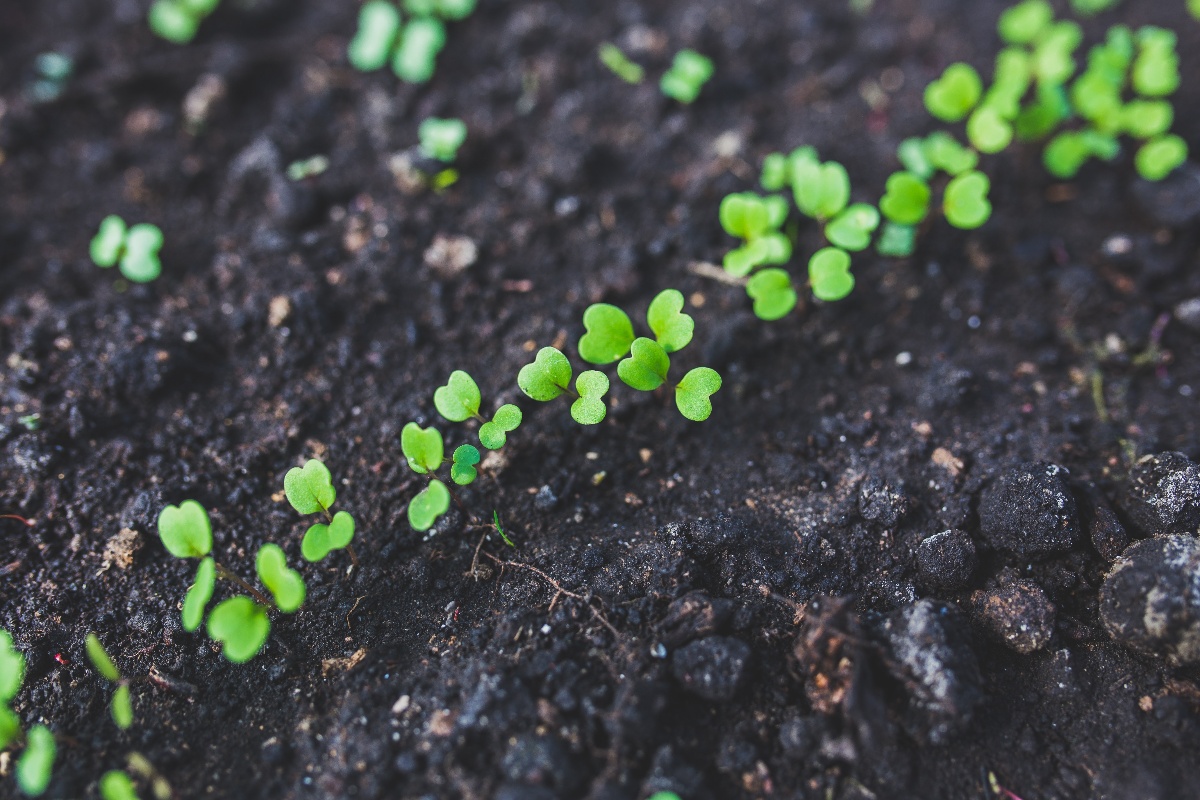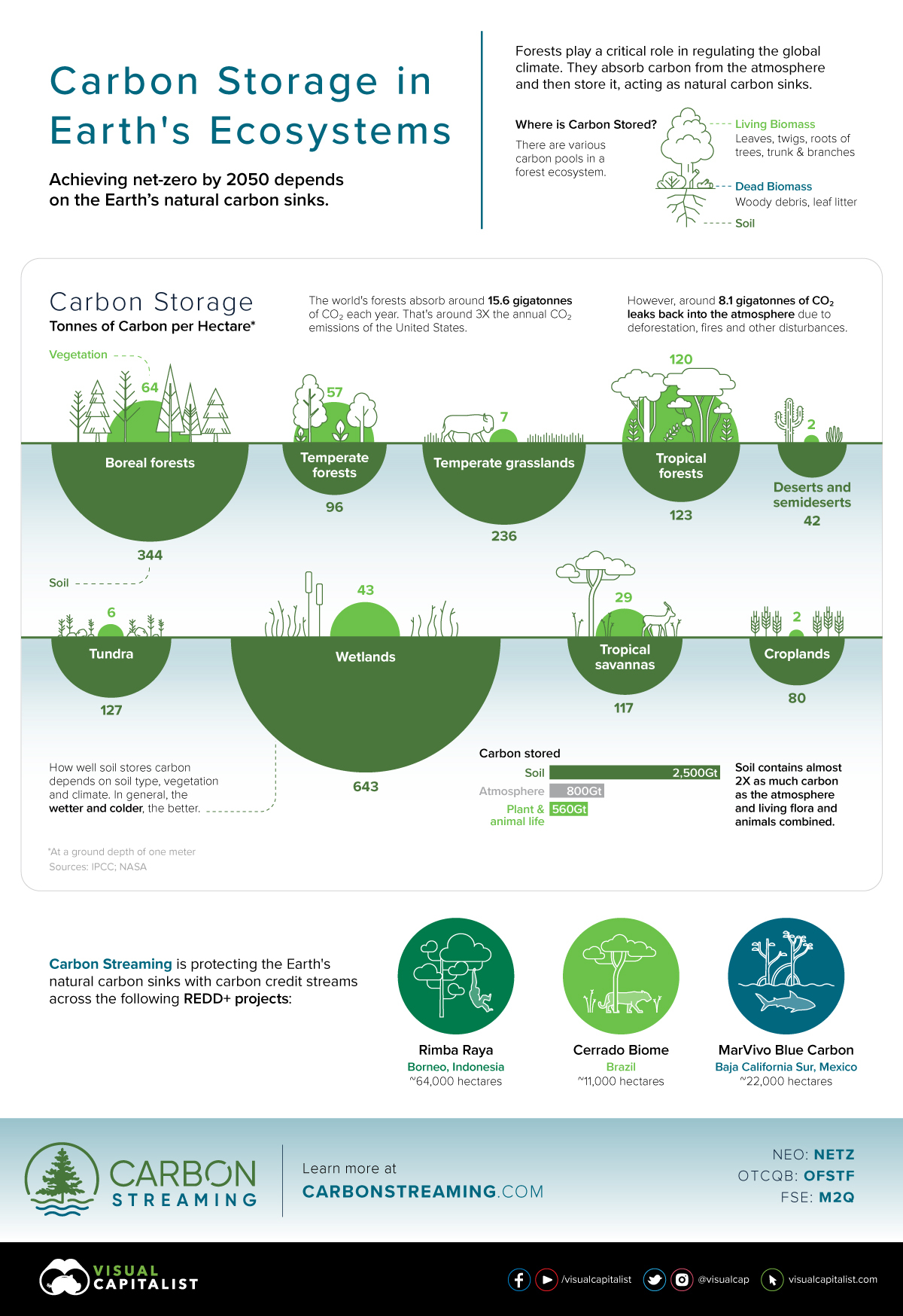These days, much of our society revolves around the fact that we need to take good care of our earth. It’s almost impossible to not see this as something positive, because when we all realise this and work together, we can make a big change.

In order to achieve something great together, clear goals have been set. One of these goals is to achieve net-zero by 2050. It’s really important to keep in mind that creating a net-zero future isn’t a small achievement at all.
If we all work together on set goals, it will be possible. But how do we achieve this state and how do we ensure that carbon is removed from the atmosphere?
In this article we will take a closer look at visualizing carbon storing in the Earth's ecosystems. We also look at the possibilities in terms of carbon removal and its possible use.

What does carbon storing in Earth’s ecosystems mean exactly?
Our earth can take care of itself very well. In fact, many carbon sinks can be found in the Earth’s ecosystems.
Carbon sinks can be found throughout a big part of nature. Plants and animals, for example, store a large part of the carbon that is emitted, but the soil and the atmosphere itself also help.
Plants and animals are responsible for storing as much as 560 gigatons of carbon and for the atmosphere this concerns 800 gigatons. The largest carbon sink is the soil, as it’s responsible for 2500 gigatons of carbon storing.
This may make it seem that the earth is already taking care of all the carbon storing itself, but we still must lend a hand.
This is partly because there has been a lot of deforestation. Today, tons of carbon are still leaking, and we will have to do something about this to achieve net-zero by 2050.
When we commit to achieving this goal, we can work together to help the earth. One way we can do this is by optimizing carbon storing, but also by removing carbon from the atmosphere and perhaps even using it for positive purposes.
In what areas does carbon storing currently work?
In addition to carbon being stored by the Earth's ecosystems, humans themselves can also store it. When carbon is released by certain industries or processes of fuel combustion, it can be transported by pipeline or by ship.
It then goes to an underground storage facility so that it doesn’t end up in the atmosphere.
This storing of carbon in an underground storage facility is part of CCUS (Carbon Capture, Use and Storage).
Not all industries can avoid 100% carbon emissions. It’s precisely for these industries and sectors that CCUS is of great importance.
Certain sectors in which CCUS has already proven successful are those of the ethanol sector, the fertilizer industry, and the gas processing industry. As such, these are the sectors where CCUS has been used the most to date.
Fortunately, CCUS is being applied in more and more sectors. This is especially true for those industries where capture costs could potentially be a bit higher.
Because it can already be seen that this initiative works in some industries, it’s valuable to apply it in more areas so that we can achieve net-zero in 2050.

What can we do to remove carbon from the atmosphere?
In addition to storing carbon, we can also try to remove it out of the atmosphere. Several strategies are possible for its removal. Perhaps the most obvious is to plant trees.
It’s well known that many trees absorb carbon from the air and convert it into oxygen. In addition to this natural way, there are also advanced technologies that allow us to remove carbon from the atmosphere.
Removing carbon can be very valuable in achieving our goals, but this doesn’t mean that we don’t need to focus on other ways still.
Storing carbon and using carbon for positive purposes remain important. We also need to keep the single most important task in mind, which is to stop using fossil fuels.
After all, if we don't put carbon into the atmosphere, we don't need to take it out.
Instead of storing carbon, how can we use it?
In addition to storing and removing carbon, we can also try to use it for positive purposes.
One company is working hard on this these days and this company is called SkyNano. Since 2017, they have been working on an electrochemical process that can be used to convert carbon to carbon nanotubes.
Many other methods release carbon monoxide as a by-product, but with SkyNano's method, this by-product consists of oxygen.
But what exactly are carbon nanotubes? These are hollow tubes that are made of carbon. Not only are they strong, but they are also suitable for conducting electrical current.
In addition, they can be used in transmission cables. What is also characteristic of carbon nanotubes is that they are flexible. This allows them to be used in woven fabrics as well.
SkyNano produces the carbon nanotubes using a point source capture technology. With this technology they extract carbon from the atmosphere, thus removing and eventually using it.
The carbon nanotubes produced can be used for many purposes. In this way, we no longer need to store carbon underground or transport it elsewhere.
So, all in all, there are a lot of different ways we can reduce the carbon in our atmosphere step by step.
By continuing to focus on these ways, we increase our chances of achieving net-zero by 2050, and that, of course, is what we're all doing it for.
Where does CO2 get stored?

Currently, the most progressive way to deal with putting away CO2 is to infuse it underground into normally happening, permeable stone developments, for example, antiquated flammable gas or oil supplies, non-extractable coal stores or saline springs.
From biological biomass like roots and leaves to soil, forests include a variety of carbon sinks. Soil holds approximately twice as much carbon as the atmosphere, plants, and animal life put together.
- - Soil: 2,500 gigatonnes of soil (Gt)
- - Atmosphere: 800 Gt
- - Plant and animal life: 560 Gt
Carbon storage is influenced by soil type, vegetation, and climate. Colder and wetter conditions, for example, enable the most efficient carbon storage in soil. Increased Soil Organic Carbon (SOC) storage can be achieved through regenerative agriculture.

Source: https://www.visualcapitalist.com/visualizing-carbon-storage-in-earths-ecosystems/






